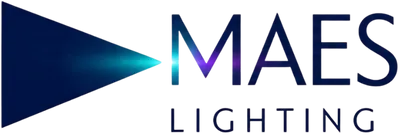
Lighting the Wet Areas of Your Business | Maes Lighting
Wet areas in businesses, such as car washes, food processing plants, and outdoor loading docks, require specialized lighting to ensure safety, durability, and efficiency. At Maes Lighting, we offer high-performance LED solutions designed for humid, dusty, or corrosive environments. This guide explores how to effectively light wet areas, focusing on the benefits and applications of vapor-tight and wet area LEDs.
Why Wet Area Lighting Matters
Lighting in wet areas must withstand moisture, dust, and frequent cleaning while providing bright, reliable illumination. Poor lighting can lead to accidents, reduced productivity, and equipment failure. Wet area lights, like those meeting IP66 or IP67 standards, ensure safety and compliance with OSHA regulations. [Source: https://www.osha.gov/]
Safety and Compliance
Fixtures designed for wet environments prevent electrical hazards and corrosion, ensuring worker safety. They align with NFPA standards for safe operation in challenging conditions. [Source: https://www.nfpa.org/]
Durability in Harsh Conditions
Wet area lights are built to resist water, chemicals, and dust, making them ideal for environments with frequent washdowns or high humidity, as noted by the U.S. Department of Energy. [Source: https://www.energy.gov/]
Features of Wet Area LED Lighting
Maes Lighting’s wet area LEDs, such as the Citadel 2 Series, combine advanced technology with rugged construction for optimal performance.
IP66 and IP67 Ratings
These fixtures are sealed to protect against water jets and dust, ensuring reliability in car washes or food processing plants. Explore Maes Lighting’s wet area LEDs for robust solutions.
High-Quality Illumination
LEDs provide bright, uniform light with excellent color rendering, improving visibility for tasks. The Illuminating Engineering Society highlights LEDs’ superior light quality for industrial applications. [Source: https://www.ies.org/]
NSF Certification for Food Safety
For food-grade environments, NSF-rated fixtures like those in the Citadel 2 Series prevent contamination, making them ideal for washdown areas in food processing facilities.
Benefits of LED Lighting for Wet Areas
Switching to LED lighting in wet areas offers multiple advantages for safety, efficiency, and cost savings.
Enhanced Safety and Visibility
Bright, flicker-free LEDs reduce the risk of slips and falls in wet environments by improving visibility. They ensure compliance with safety standards, protecting workers and equipment.
Energy Efficiency and Cost Savings
LEDs consume up to 60% less energy than fluorescent fixtures and last over 50,000 hours, reducing utility and maintenance costs. Maes Lighting’s industrial LEDs offer long-term savings.
Low Maintenance and Easy Cleaning
Sealed designs simplify cleaning, crucial for hygienic environments. Routine inspections using accessories ensure consistent performance with minimal upkeep.
Applications of Wet Area LED Lighting
Wet area LEDs are versatile, serving a range of industries and environments.
Food Processing and Cold Storage
NSF-rated LEDs withstand frequent washdowns and low temperatures, making them perfect for food processing plants and refrigeration units. They ensure hygiene and safety in these critical areas.
Car Washes and Parking Garages
IP66-rated fixtures endure high humidity and water exposure in car washes and parking structures. Maes Lighting’s wet area LEDs deliver reliable illumination in these spaces.
Outdoor Industrial Areas
From loading docks to marine facilities, wet area LEDs resist corrosion and weather, providing consistent lighting. They complement explosion-proof lighting in hazardous wet zones.
Best Practices for Lighting Wet Areas
To maximize safety and performance, follow these best practices when installing and maintaining wet area lighting:
Choose the Right Fixtures
Select LEDs with appropriate IP ratings and certifications for your environment. For hazardous wet areas, pair with explosion-proof lighting to ensure compliance.
Professional Installation
Install fixtures at optimal heights and angles for even light distribution, ensuring vapor-tight integrity. Maes Lighting’s consultation services provide expert installation guidance.
Regular Maintenance
Clean fixtures quarterly and inspect seals for wear, using accessories for replacements to maintain IP ratings and performance.
Choosing the Right Wet Area Lighting for Your Business
Selecting the best lighting involves balancing durability, efficiency, and safety. Key tips include:
Assess Environmental Conditions: Choose IP66 or higher for wet, dusty areas.
Prioritize Quality: Opt for NSF-rated fixtures for food-grade applications.
Work with Experts: Maes Lighting’s industrial LEDs ensure reliable, compliant solutions.
Conclusion
Lighting the wet areas of your business requires durable, efficient solutions that prioritize safety and performance. Maes Lighting’s wet area LEDs, like the Citadel 2 Series, offer the perfect balance of reliability and energy savings for challenging environments. Explore our wet area LEDs and industrial LEDs to illuminate your space effectively. Contact Maes Lighting today for tailored lighting solutions.



